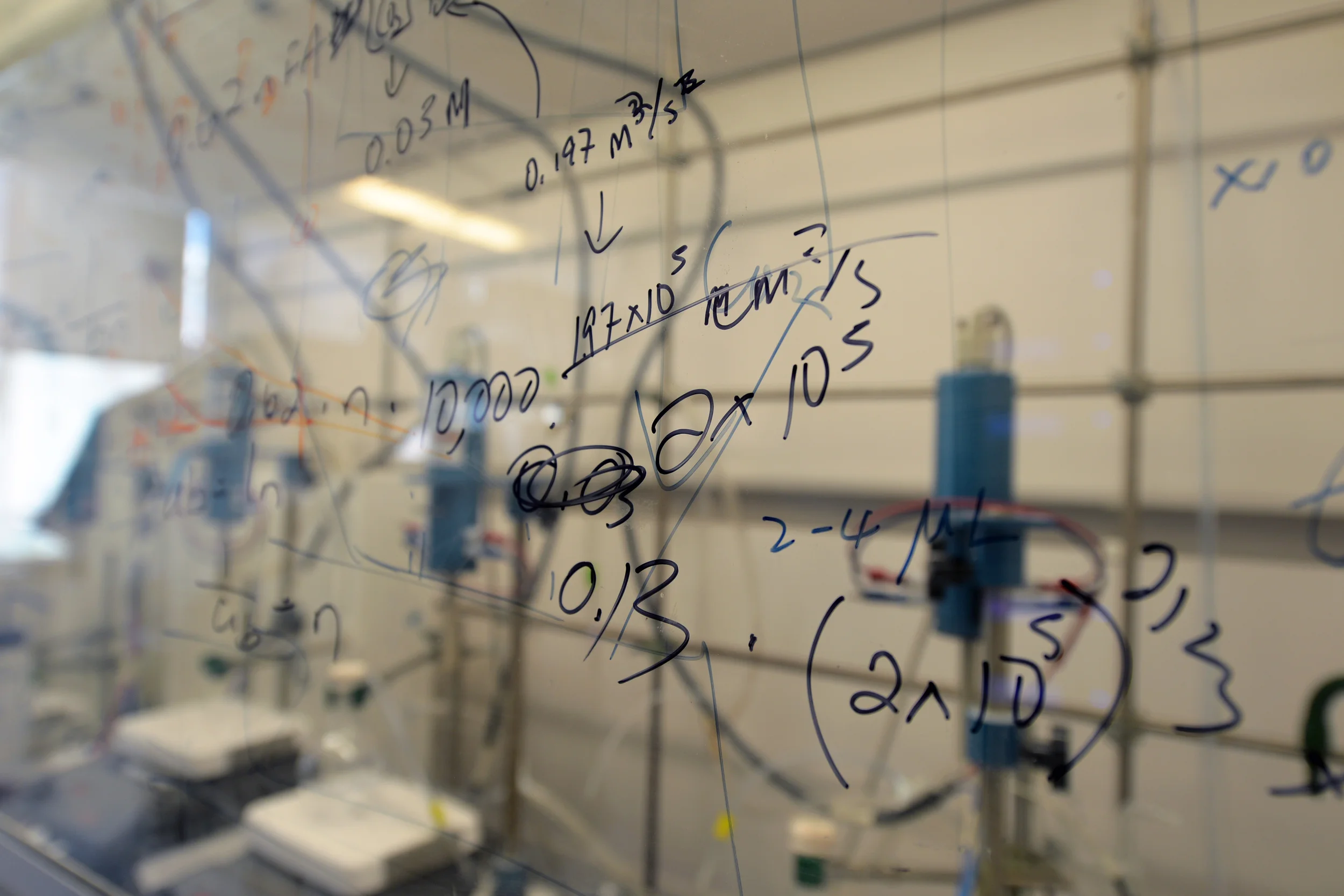Research
THRUST 4: Numerical Modeling, Test-Bed Prototyping, and Benchmarking
Modeling and simulation of device parameters and material properties, benchmarking and test-bed architectures
The research team in Thrust 4 focuses on the development of test-bed prototypes designed to study material performance under CO2 reduction reaction conditions.
There are many questions that the team is addressing, for example:
How will factors, such as operational temperature, impact the performance of materials and (photo)electrochemical assemblies?
What are the target transport properties of membrane separators for CO2 reduction, and how might they be realized using existing or new polymeric materials?
How might geometric parameters in 2-dimensional or 3-dimensional test-bed prototypes influence CO2 reduction, and how should such test-beds be designed and operated?
How and by what criteria can the activity and selectivity of (photo) electrocatalysts be measured and compared?
The approach involves the following themes:
Use of multiphysics modeling and simulation of existing and hypothetical test-bed prototypes.
Coupling of transport property measurement, advanced characterization and development of theoretical models for a flexible polymer membrane platform.
Rapid test-bed prototyping and associated diagnostics aimed at validating the performance of JCAP-discovered electrocatalysts, photocatalysts and membranes.
Establishment of a reliable performance validation and comparisons for CO2RR (photo)electrocatalysts.
Thrust 4 Coordinator is Dr. Adam Weber.
Selected Recent Publications
Chen, Y., Lewis, N. S. & Xiang, C. Modeling and Simulation of the Spatial and Light-Intensity Dependence of Product Distributions in an Integrated Photoelectrochemical CO2 Reduction System. ACS Energy Letters, DOI: 10.1021/acsenergylett.6b00134 (2016).
Zhou X. et al. Solar-Driven Reduction of 1 atm CO2 to Formate at 10% Energy-Conversion Efficiency by Use of a TiO2-Protected III-V Tandem Photoanode in Conjunction with Bipolar Membrane and a Pd/C Cathode Electrocatalyst. ACS Energy Letters, DOI: 10.1021/acsenergylett.6b00317 (2016).
Beckingham, B. S., Lynd, N. A., Miller, D. J. Monitoring Multicomponent Transport using In Situ ATR FTIR Spectroscopy. Journal of Membrane Science, DOI: https://doi.org/10.1016/j.memsci.2017.12.072 (2017).
Gurudayal, G., Bullock, J., Sranko, D. F., Towle, C. M., Lum, Y., Hettick, M., Scott, M. C., Javey, A., Ager, J. W. Efficient solar-driven electrochemical CO2 reduction to hydrocarbons and oxygenates. Energy and Environmental Science, DOI: 10.1039/C7EE01764B (2017).
Soniat, M., Tasfaye, M., Brooks, D., Merinov, B., Goddard, W. A., Weber, A. Z., Houle, F. A. Predictive simulation of non-steady-state transport of gases through rubbery polymer membranes. Polymer, https://doi.org/10.1016/j.polymer.2017.11.055 (2017).
Han, L., Zhou, W., Xiang, C. High Rate Electrochemical Reduction of Carbon Monoxide to Ethylene using Cu-Nanoparticle-Based Gas Diffusion Electrodes. ACS Energy Letters, DOI: 10.1021/acsenergylett.8b00164 (2018).
Greenblatt, J. B., Miller, D. J., Ager, J. W., Houle, F. A., Sharp, I. D. The Technical and Energetic Challenges of Separating (Photo)Electrochemical Carbon Dioxide Reduction Products. Joule, https://doi.org/10.1016/j.joule.2018.01.014 (2018).
For complete list of JCAP work, please see publications and research highlight pages.


